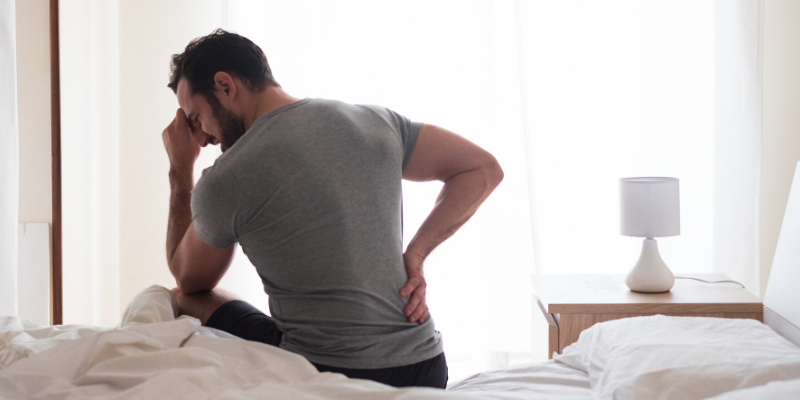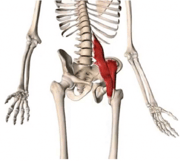
How to improve your sleeping position
When you feel pain, it’s normal to want to look for the cause. You might find yourself going over every little gesture, every move from the day before. Was it something you did at work? What we often forget is how much of our lives is spent in bed—about 30 years! What if it were as easy as changing how you sleep?
Back, side, or stomach?
Despite how much time you might spend in dreamland, when your head hits that pillow, your sleep posture is probably the last thing on your mind. Yet poor sleep posture can be a greater source of pain than you think. At the very least, it can prolong your pain. That’s why it’s worth taking the time to analyze your sleeping position. Here are some tips to reduce your morning soreness for each one.
Position 1: Sleeping on your back
Try placing a pillow under your knees to help keep your back in a neutral position. This will release the tension in your psoas, the muscle that connects the lumbar region to the legs (see image below). Too much tension pulls the spine into an over-arched position (a condition known as hyperlordosis). Sleeping in this position all night can cause prolonged pinching of the lumbar joints, leading to morning stiffness.

Position 2: Sleeping on your side
Bend your knees to keep your back straight. Placing a pillow between your knees will increase your comfort and prevent your spine from twisting. If you have shoulder pain, avoid placing your arm under the pillow as this will pinch the tendons in the shoulder region. Position your arm slightly in front of your body instead, so that your weight rests on the shoulder blade.
Position 3: Sleeping on your stomach
If you really can’t sleep any other way, place a pillow under your abdomen to help maintain a more neutral position in the lower back. Sleeping in this position is not recommended, however, as it keeps the spine, and especially the cervical (neck) region, in a twisted position. An acceptable compromise would be to adopt a hybrid position, halfway between your side and your stomach. This posture can be more easily maintained by using a body pillow.
Frequently asked questions
What type of mattress is best?
While we don’t suggest you sleep on the floor, it’s important to choose a sufficiently firm mattress so you can maintain a proper sleeping position and get a good night’s sleep.
How do I choose the right pillow?
Choose your pillow according to your sleeping position. It should fill the gap between your mattress and your head without disrupting the natural alignment of your spine. A simple way to test your pillow is with an apple: Place an apple on your pillow, then remove it. There should be a slight delay before the pillow goes back to its original shape. A pillow that immediately springs back will amplify tiny movements in the neck, which can cause inflammation in the long run.
A useful technique for falling asleep
Have you tried 4-7-8 breathing? This technique acts like a natural tranquilizer on your body. Start by breathing deeply through the nose for 4 seconds, hold your breath for a count of 7, and then breathe out through the mouth for 8 seconds. Repeat the breathing cycle 4 times.
Sleep tight! And more importantly, wake up feeling refreshed!
Need to talk to a professional?
Other articles that might interest you...

Manual handling at work: preventing the most common injuries
Whether you're a personal support worker, a construction worker, or even a warehouse employee,...

Effective treatments for herniated discs
Physiotherapy can help What treatments work best for back pain caused by a herniated disc? Discover...

Everything you need to know about taping
Why tape? We see football players with tape wrapped around their ankles, athletes sporting...
 Home
Home